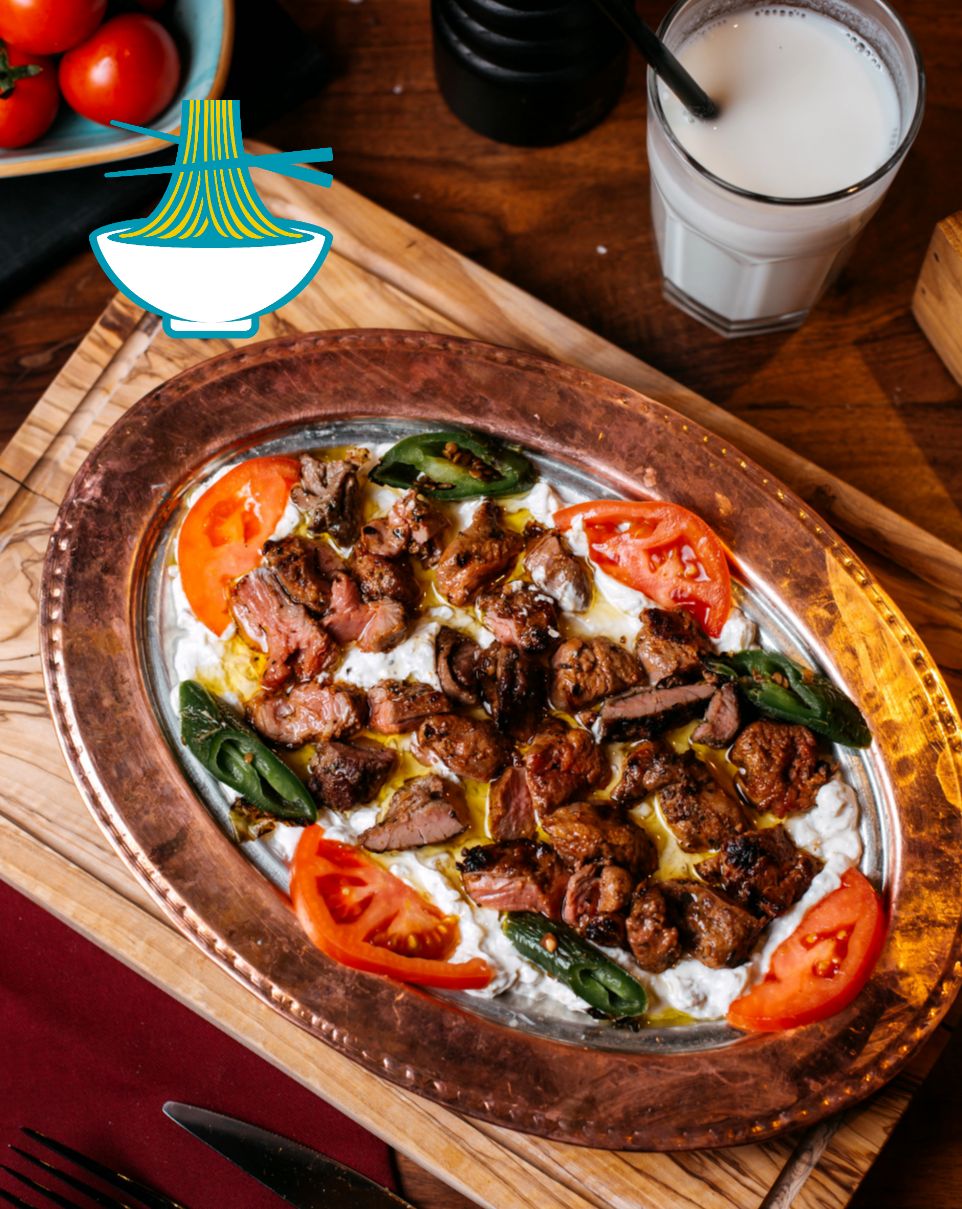Nestled in the heart of Central Asia, Kazakhstan offers a vibrant tapestry of culture, and at the center of its culinary heritage lies a dish that beckons both locals and curious travelers alike – Beshbarmak. In this gastronomic journey, we'll delve into the rich traditions and flavors of Kazakhstan's national dish. From its humble ingredients to the vibrant stories it carries, join us as we unwrap the culinary heart of this fascinating nation.

Ingredients:
- 1 pound (450g) of lamb or beef, preferably with bones for added flavor
- 1 onion, finely chopped
- 1 pound (450g) of wide, flat noodles (you can use store-bought or make your own)
- Salt and pepper, to taste
- Vegetable oil, for frying

Instructions:
Step 1: The Meaty Foundation
Start by placing the meat in a large pot, and cover it with water. Bring it to a boil, then reduce the heat and let it simmer for about an hour or until the meat becomes tender. Skim any impurities that rise to the surface. This slow simmering allows the meat to develop a rich, savory flavor.
Step 2: The Noodle Nest
While your meat is simmering away, you can prepare your noodles. In a separate pot, cook the wide, flat noodles according to the package instructions or your homemade recipe. They should be tender but still have a satisfying bite. Once they're done, drain them and set them aside.
Step 3: The Onions' Charm
In a frying pan, heat a bit of vegetable oil over medium heat. Add the finely chopped onions and sauté them until they turn a beautiful golden brown. These caramelized onions will add a sweet, aromatic touch to your Beshbarmak.
Step 4: Bringing it All Together
Once your meat is tender, remove it from the pot, and shred it into bite-sized pieces. You can keep the broth for another use, but for Beshbarmak, it's all about the meat and noodles.
Step 5: The Final Assembly
Now comes the moment of truth. Place a generous mound of those tender, flavorful meat pieces over a bed of your cooked noodles. Top it all with those fragrant caramelized onions. Don't forget to season it with salt and pepper to taste.
Step 6: Dive In!
Beshbarmak is traditionally eaten with your hands, but a fork and knife will work just as well if you prefer. The joy of this dish lies not only in its delightful taste but also in the communal experience it offers. Each bite tells a story of Kazakh culture, where sharing good food symbolizes hospitality and connection.
So, whether you're in Kazakhstan or your own kitchen, Beshbarmak invites you to partake in a culinary tradition that transcends borders and brings people together in the most delicious way possible. Enjoy!

Nutrition Value
1 pound (450g) of lamb or beef:
- Calories: Approximately 1,200-1,500 calories (varies based on the cut of meat)
- Protein: Approximately 90-120g
- Fat: Approximately 90-120g
- Carbohydrates: Minimal (negligible)
- Sodium: Varies depending on preparation (can be higher if salted during cooking)
1 onion, finely chopped:
- Calories: Approximately 40-50 calories
- Protein: Approximately 1g
- Fat: Approximately 0g
- Carbohydrates: Approximately 10-12g
- Sodium: Minimal (negligible)
1 pound (450g) of wide, flat noodles (store-bought):
- Calories: Approximately 1,400-1,600 calories (varies by brand and type)
- Protein: Approximately 40-60g
- Fat: Approximately 4-10g
- Carbohydrates: Approximately 300-400g
- Sodium: Varies by brand (check nutrition label)
Salt and pepper, to taste:
- Calories: Minimal (negligible)
- Protein: Minimal (negligible)
- Fat: Minimal (negligible)
- Carbohydrates: Minimal (negligible)
- Sodium: Varies based on the amount used
Vegetable oil, for frying (estimated for frying onions):
- Calories: Approximately 120-140 calories per tablespoon
- Protein: Minimal (negligible)
- Fat: Approximately 14-16g per tablespoon
- Carbohydrates: Minimal (negligible)
- Sodium: Minimal (negligible)

Please note that these are rough estimates and can vary based on factors such as the cut of meat, specific noodle brand, and the amount of oil used. For precise nutritional information, it's advisable to refer to the packaging of the specific products you use and consider portion sizes. Additionally, the cooking method and seasonings used can also impact the final nutritional content of the dish.


Comments